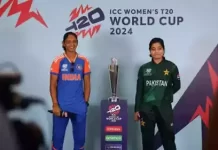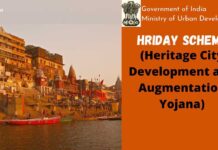New Delhi. Siyasat.net
On 9 March, 2020, Delhi Minorities Commission constituted a Fact-Finding Committee, headed by Mr M.R. Shamshad, Advocate-on-Record, Supreme Court of India, to look into the violence that took place in different areas of North East Delhi during 23-27 February 2020. Soon after the Committee started its work, Covid-19 lockdown came in seriously affecting the Committee’s work. The Committee restarted its work during the partial lockdown in June, 2020.
The Committee made efforts to invite victims of violence to come forward with information, documented individual victim testimonies at various sites of North East Delhi and conducted physical surveys of the damage to religious sites. Both the Committee and Delhi Minorities Commission sought information about FIRs and arrests etc. from Delhi Police but neither of them got any response. Considering the overall situation, the time period of the Committee was extended by the Commission till 30 June, 2020.
The Committee completed and submitted its 130-page report on 27 June 2020. Thereafter, the Commission considered the report and accepted it. The report has now been presented by the Commission, with request for further action, to Hon’ble Lt. Governor Delhi, Hon’ble Chief Minister Delhi, Hon’ble Dy. Chief Minister Delhi, all Delhi Government ministers and Hon’ble Speaker, Delhi Legislative Assembly.
Following are key findings and recommendations of the report:
1.Repeated Incitement to violence
Througout the Delhi assembly elections campaign from December 2019 to February 2020, there were a number of speeches by BJP leaders inciting people to violence against anti-CAA protesters. The details of these speeches have been recorded at length in the report.
Violence broke out in different pockets in North East Delhi almost immediately after the instigating speech of Shri Kapil Mishra on 23 February 2020 at Maujpur in which he openly called for forcefully removing the protestors at Jafrabad in North East Delhi. These threats to the protesters and people were given in the presenceof the then Deputy Commissioner of Police North East, Shri Ved Prakash Surya.

2 Planned, organised and targeted violence
Armed mobs took to different areas of North East Delhi, attacked individuals, looted and burned properties and businesses. The mobs were chanting slogans like “Jai Shri Ram”, “Har Har Modi”, “Modiji, kaat do in Mullonko”, “Aaj tumhe aazadidenge” etc. while they selectively attacked Muslim individuals, houses, shops, vehicles, mosques and other properties. Testimonies recounted that the mobs contained large numbers of outsiders but also included some locals whom victims could recognise. The mobs were armed with lathis, iron rods, tear gas shells, cylinders and firearms.
In several areas of North East Delhi, properties owned by Muslims were looted, burned, and completely destroyed. The attacks were targeted to the extent that in instances where the owners were Hindus but the properties had been rented to Muslims, the buildings were spared but the moveable properties were looted or burned outside the premises.
Testimonies of the victims reveal that the violence was not spontaneous like a “riot”. It was planned, organised and targeted.
3. Targeting of Religious places
The report documents 11 mosques, five madrasas, one shrine and one graveyard that were attacked and damaged in the violence. Mobs specifically vandalised and burned Muslim places of worship and learning, namely mosques and madrasas, as well as religious symbols like copies of the Holy Quran. Non-Muslim places of worship in Muslim majority areas remained untouched and were guarded by Muslims neighbours during the riots.
Large numbers of Muslims have been displaced from the area. Due to the Covid-19 lockdown, Muslims were displaced even from the relief camps where these displaced people took refuge.

4. Role of Police
Multiple testimonies collected by the Fact-Finding Committee recount reports of police inaction even as violence unfolded before them, or of police not arriving despite repeated calls on the emergency call number. Testimonies also suggest how police were patrolling the area but when asked for help, they refused saying they had no orders to act. Police also did not exercise powers to disperse unlawful assemblies, or take measures to apprehend, arrest and detain those perpetrating the violence.
Multiple testimonies of victims of violence have reported that FIRs have either been delayed or have not been acted upon. Further, in spite of the serious nature of complaints, the police did not act upon the FIRs filed. In some cases, police refused to register an FIR unless the complainant omitted names of the accused. In some cases, complaints have been wrongly appended to previously registered FIRs.
Testimonies also suggest that in some cases police were complicit and abetted the attacks. Even where police officials did attempt to act in order to disperse the crowds, victims state that police stopped their colleagues as they attempted to disperse the crowd saying “do not stop them”. In some cases, police merely stood as onlookers while the mobs engaged in looting, burning and violence. In others, they explicitly gave a go-ahead to the perpetrators to continue with their rampage, saying “do what you want”. A few accounts state how police and paramilitary officers even escorted the perpetrators safely out of the area, once the attack was over. In some cases, police escorted victims also to safety.
In some testimonies, clear allegations of engaging in direct violence, including physical assault and abuse, have been made against police officers.
In some cases, victims themselves have been arrested, especially where they filed or attempted to file complaints against named individuals. Submission of chargesheets without proper investigation into complaints with named accused further creates doubts about the impartiality and objectivity of the investigation as well as the overall narrative being put forward by Delhi Police.
5. Impact on Women
Testimonies suggest that Muslim women were attacked based on their religious identity; their hijabs and burqas were pulled off. Narratives of women suggest that the police forces and violent mobs attacked protest sites, women were beaten up by male police officers and attacked by mobs. Women have also recounted instances of acid attacks and threats of sexual violence by the mobs.
Police used the chants of “Azaadi” to sexually harass women and attack them, including at least one incident of a police officer flashing his genitals in front of women protestors.The verbal abuses were also sexual and communal in nature. It is clear that the police did not come forward to help and, in several instances, resorted to violence towards women.
6. Compensation
There is a serious disparity in the determination of compensation amounts in cases of deaths of public servants and ordinary citizens who lost their lives in the violence due to failure of law and order authorities. Deaths of public servants are being compensated with significantly larger amounts. Other compensation for loot, burning, damage to properties and religious places have either not been paid or very small amounts have been paid. Even after four months of the violence, verification process has not been completed in many cases. In many cases, after verification, no compensation or very small amount of “interim compensation” has been paid.
7. Recommendations:
1. Government should constitute a five-member independent Committee with a particular composition. The Committee be chaired by a retired High Court Judge, and made up of 1) a District and Sessions Judge, 2) a Senior Advocate, 3) a retired police official not less than the rank of Deputy Inspector General of Police and not being a person who served in Delhi Police, and 4) a civil society member of repute. In selecting the Chair and members, the suitability of candidates should be assessed in accordance with the following criteria: (i) proven record of personal integrity, (ii) proven commitment towards upholding human rights, and (iii) knowledge of law and due process.
2 The mandate of the committee be multi-fold and should include:
(i) Ensuring the proper and prompt registration of FIRs in all cases where complaints have not yet been converted into FIRs;
(ii) Ensure the recording of victims’ statements under Section 164 of CrPC;
(iii) Ensure witness and victim protection in accordance with the Delhi Witness Protection Scheme;
(iv) Review chargesheets filed by the police in light of left-out facts;
(v) Probe the complicity and abdication of duty by Delhi Police in allowing the violence to take place, including command responsibility, as well as culpability for engaging in direct acts of violence – including sexual violence – through a written report supported by photographs, videos and other evidence as possible, to be submitted to the court;
(vi) Ensure that compensation is paid to all victims in a fair and time-bound manner;
(vii) Review the Delhi government’s Assistance Scheme for the riot victims to assess whether the compensation amounts under each category are proportionate to the quantum of harm, injury, and loss suffered and provide new formulations, if any, in a written report.
3. Appoint a team of 2-3 experts to assist the Claims Commissioner, on behalf of the aggrieved persons who may need assistance.
4. Establish a team of 5-10 experienced trial court advocates, competent in the practice of the criminal law, in collaboration with the Delhi State Legal Services Authority, to render legal services to the victims; ensure a gender balance in the team, and make sure special measures are taken to assist women and child victims, including filing complaints of sexual violence against private persons and/or public officials. Assure women victims of effective legal representation, to pursue cases of sexual violence in accordance with their right to engage an advocate of their choice, to assist the prosecution.
5. Seek legal opinion from a retired Supreme Court or High Court judge to assist the High Court in its determination on the direct and proximate nexus of the speeches and slogans raised by political leaders which led to the break-out of violence in the North East district.
6. Take special measures to ensure that no person who has exhibited bias against any group is appointed as Public Prosecutor in these cases.
7. Take all measures to ensure that Public Prosecutors act in a fair and impartial manner and in the interest of justice.
8. Use the report’s findings as a basis to determine and bear the cost of damages caused to religious places of worship, learning, graveyards and shrines.
Full report is available online here: https://archive.org/details/DMC-delhi-riots-fact-finding-2020
(www.siyasat.net is Ahmedabad,Gujarat,India based website)

































